Only 20% of cell phones get recycled every year — be responsible and make the correct choice!
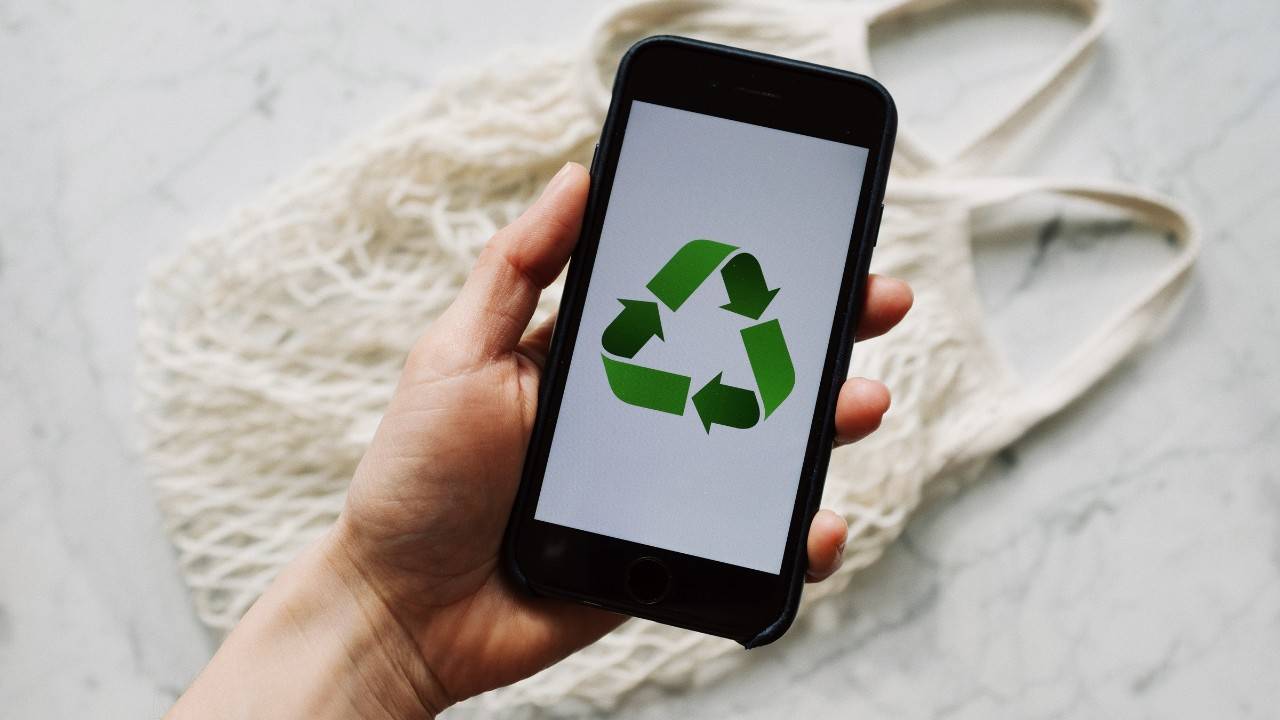
Environmental experts have estimated that out of over 16 billion cell phones worldwide, over 5 billion will be discarded or end up at the back of a drawer.
Those are staggering numbers, but even more concerning is where most of these old cell phones will end up. Between landfills and exports to developing countries for unsafe cell phone recycling, there are many reasons to understand why it’s so important to do the right thing.
And to help you with this process and convince others to do the same, I’ve put together this guide on why recycling cell phones is so important and what your best options are.
Cell Phones Are Miniature Goldmines
The first thing I want to point out about cell phone recycling is that most people don’t realize how much value is contained in a mobile phone based on just a few metals they contain.
Let me explain.
What Materials Can You Retrieve?
Hundreds of different raw materials go into cell phones, and extracting the recycled materials can be difficult depending on the part of the phone. Printed circuit boards require specialized machines to break down and then extract, and when it comes to batteries, the process becomes even more complex.
Here are some of the materials that need to be separated into each of the components.
Dealing with all the materials require highly specialized machines and techniques to ensure they are fully extracted and separated.
Value Of These Materials
Cell phones are not the only electronic waste that have valuable materials. Pretty much any digital electronic devices in your home will contain a lot of highly valuable materials.
And when you add up the numbers to millions of phones, then it becomes even clearer how economically viable old cell phone recycling really is.
Let me give you some numbers.
Here is what you can extract from one million cell phones:
Yes, that’s a lot of very valuable metals. But beyond the value of these metals, recycling mobile phones will then also reduce the demand for mining.
This leads me to the environmental impacts.
What About the Environmental Impact of Cell Phone Recycling?
Based on estimates from environmental agencies, over one million cell phones end up in landfills each year. And here is why that is such a major problem from an environmental perspective.
Toxic Materials
One of the most critical reasons in favor of cell phone recycling comes down to the fact that some of the materials can become toxic when they leak out into the environment.
Imagine those millions of cell phones ending up in a landfill each year and gradually breaking down due to heat and moisture. It’s especially the cell phone batteries that can become toxic and do huge damage to the environment and wildlife.
Unnecessary Landfill Waste
While on a pure volume basis there is a lot more household waste than electronic waste, you have to keep in mind that it’s completely unnecessary for these phones to end up in a landfill in the first place.
The added demand for finding and expanding these toxic places has a huge effect on the ecosystems around these sites. And if you can have even a small impact, then it’s more than worth doing.
Especially when you see how easy it is to recycle mobile phones the right way.
More on this shortly.
Increase Mining Demand
When cell phones enter the cycle economy, thousands of pounds of metals can be put to perfectly good use again. Once copper, gold, and palladium are extracted, they can go straight back into a new high-tech device.
And that adds up to a huge reduction in demand for raw metals that often come from developing countries where the environmental protections and restrictions are nothing like they are in America.
How To Recycle Cell Phones?
In this section, I’ll guide you through the steps you need to take before recycling your cell phone. I’ll also show you some great options that make cell phone recycling easy.
Preparing Your Phone For Recycling
The last thing you want to do is simply remove your sim card and then hand over your old cell phone to a stranger. You have an awful lot of personal data on that phone from financial details to photos and login information for all sorts of services.
If you don’t erase all that data, then it could become a problem if the cell phone lands in the wrong hands.
But before you just start erasing your cell phone content, you’ll want to make sure you back up all your important files and data. With modern Smartphones, you’ll probably have features that allow you to save all your files in a cloud service.
But if you have an older cell phone, then check with the manufacturer if there’s an easy way to back it up.
Most cell phones these days have built-in tools that will allow you to do a full factory reset. That’s an important process to follow as it’s the most secure way to remove all your personal data.
But what do you do if your phone is damaged and it still has your personal data stored?
In that case, your safest option is to bring it to a cell phone recycling company that offers certified data destruction.
I’ll recommend one such option below.
What these companies do is physically destroy the storage device and provide you with a certificate that this was completed and that the data is indeed fully destroyed. But you have to do this through a reputable and certified recycling provider.
Step-By-Step Cell Phone Preparation Process
If you follow these steps, you’ll ensure that your personal data doesn’t get into the wrong hands:
- Do a full data backup either to a computer or a cloud service.
- Open up all the apps where you have to log into a service and sign out of the accounts.
- Check which apps and services require two-factor authentication, like banking and other financial services. You’ll possibly need to take additional steps for these on your new cell phone.
- Perform a factory reset of the cell phone and ensure that everything is erased when it’s complete.
- Choose a recycling firm like GreenCitizen to deal with certified data destruction if you can’t perform a factory reset.
4 Practical Cell Phone Recycling Options
Once you have prepared your cell phone for recycling, it’s time to choose an option for your next step. You have multiple options, and one of them is the generally favored choice to ensure that your cell phone is properly dealt with.
e-Waste Recycling Centers
The best option for cell phone recycling involves finding a local recycling company that is fully certified and registered with state and federal agencies. Unfortunately, there are still many dubious companies out there that advertise taking in old cell phones but don’t follow the right processes.
In many cases, they simply strip out the valuable parts and either export the remainder or send it to a landfill. The worst case scenario can be shipping cell phones to a developing country where everything, including the cell phone batteries, is open-air burned to expose the remaining metals.
Fully certified recycling companies have to abide by strict laws and regulations to deal with valuable and hazardous materials. All materials are first separated using specialized machines and processes.
And anything that can enter the cycle economy is then further separated. The remaining materials, which could include hazardous waste, are then handed over to hazardous waste facilities.
This is an expensive but necessary step. And you only have the peace of mind that this happens when you choose a legitimate and certified recycling provider.
Reputable companies are also far more likely to offer a trustworthy data destruction service. The last thing you want is for personal data to be extracted by criminal gangs and for your phone to just end up at a landfill.
Manufacturer And Carrier Take-Back Programs
Another option for cell phone recycling is checking whether there is a manufacturer or carrier take-back program available. Under pressure from customers and legislation, most companies these days offer some programs either through a mail-in service or by making a drop-off location available.
Here is a list of companies that currently offer such a service, and you should check out the links to find out how the exact process works.
Sell Your Old And Working Mobile Phones For Money
An alternative to cell phone recycling is selling it if it’s still working fine. There are plenty of people who don’t want to have the latest phones or simply can’t afford one.
I was even able to sell a 17-year-old Nokia phone recently that I found in a drawer with its charger, and it powered up again. There’s obviously still a market, and the $15 was a welcome surprise.
Here are some options to consider:
Donate Your Old Cell Phones
This is another great alternative to cell phone recycling. Most charity stores will accept old cell phones as they are often very fast and easy to sell.
Where to Recycle Cell Phones?
OK, so we’ve addressed all your options for dealing with old cell phones; now it’s time to give you some specific recommendations to recycle phones with a leading California-based company.
Electronics Recycling Drop-off - San Francisco Bay Area Only
Cell phone recycling doesn’t get any easier than this if you live in the San Francisco Bay Area. GreenCitizen is based in Burlingame and offers e-waste recycling for individuals and businesses.
Here’s how the process works:
- Step 1: Fill out the drop-off form with details about the cell phones and other e-waste recycling items you have.
- Step 2: List out the fee-based items like phones and make sure you can pay the small fee for data destruction at the drop-off location.
- Step 3: Visit our office during opening hours to hand over your phone and pay the fee through contactless service.
- Step 4: GreenCitizen employees will provide you with a receipt and notify you once the data has been fully destroyed.
GreenCitizen can recycle phones from all brands and will also handle older cell phones and other electronic waste you might have lying around.
Business Recycling Pickup Services - San Francisco Bay Area Only
GreenCitizen also offers convenient collection services for businesses in the Bay Area to recycle cell phones and any other kind of electronic office equipment.
It’s one of the easiest and least disruptive ways for businesses to get rid of clutter by doing the right thing and ensuring they follow laws and regulations for recycling electronics.
Let me show you how easy this process really is:
- Step 1: Gather up all the old cell phones and electronics you have stored away that no longer have any use.
- Step 2: Separate the items with any kind of data storage to one side and make a list of all the items.
- Step 3: Take photos of the devices and send them to GreenCitizen along with the pick-up service form for details of the devices.
- Step 4: Receive a quote from GreenCitizen for the recycling service and collection fee.
- Step 5: Arrange a pick-up time that suits you and allow the driver access to boxes of devices on the day of collection.
- Step 6: After weighing and sorting through the items, GreenCitizen will send you an invoice for the full service.
It’s a service that is as hands-off as possible, making it one of the most convenient recycling companies to work with.
Mail-In Electronics Recycling - US-Wide Service
For anyone not living close enough to the GreenCitizen office for drop-off or collection of e-waste recycling, the company also offers a great mail-in service. This is especially convenient for people around the country who don’t have easy access to any reputable and certified recycling companies.
Here’s how it works:
- Step 1: Fill out the GreenCitizen mail-in form with all the details about the old cell phone.
- Step 2: Select data destruction to be 100% certain that there won’t be any data left on the phone.
- Step 3: Pay the fee online for handling the process and recycled materials.
- Step 4: Contact your favorite delivery company and arrange for a collection at your home or a drop-off center.
- Step 5: GreenCitizen will email you a confirmation of receipt as well as recycling and data destruction.
It’s a simple and easy way to do the right thing from the comfort of your home.
Green Directory - US-Wide Service
And finally, GreenCitizen has a great online directory that allows you to find legitimate companies that recycle cell phones and other electronics.
All you need to do is go to the Green Directory and enter your zip code and what kind of e-waste recycling service you’re looking for. You’ll receive a list of companies that are near you, and you can then contact them to find out what the process is.
FAQ
When a cell phone is recycled, people and machines break it down into the main components. These are then further processed in order to separate the raw materials and then either safely dispose of the toxic ones and bring the rest into the cycle economy.
You should back up, and factory reset your cell phone before bringing it to recycling services. While there are services that offer data destruction, it’s always safest to ensure there is nothing personal left on the phone.
Most parts of a cell phone can be recycled. This includes plastics, silicon, copper, gold, palladium, and many other metals. E-waste recycling has become a lot more efficient at dealing with all these materials.
You dispose of old cell phones at home by contacting a recycling company like Green Citizen. You can either drop it off or send it in. The last thing you should do is dump it in the trash as there are valuable and toxic materials in it.
You prepare a cell phone for recycling by backing up all your data and then doing a factory reset. This will fully erase all your data and make it impossible to retrieve if it gets into the wrong hands.
Yes, Verizon will take old phones as a trade-in. The company has a dedicated e-waste recycling service, and you can get credit for your old phone to either buy a new one or reduce your next monthly bill.
Take The Right Approach To Cell Phone And E-Waste Recycling
Doing the right thing when it comes to e-waste recycling doesn’t take much effort at all. With all the above options, you’ll be able to recycle any old phones and make sure that it doesn’t end up in a landfill.
The best thing to do is simply drop your old device off at GreenCitizen’s Burlingame office. For a small fee, you’ll also have the peace of mind that no data will get into the wrong hands.
The GreenCitizen team has plenty of experience and uses the latest technology to ensure as many raw materials are extracted from old devices as possible.
You’ll do the right thing for digital safety and the environment.

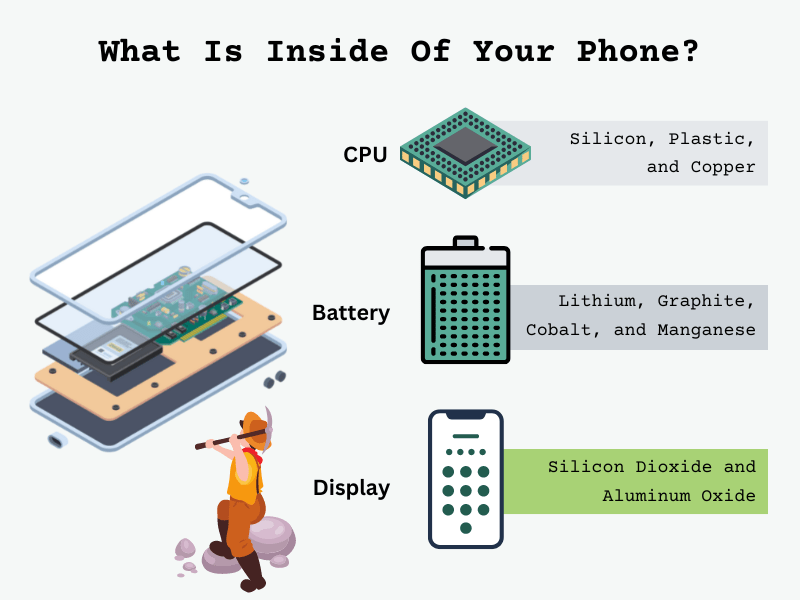
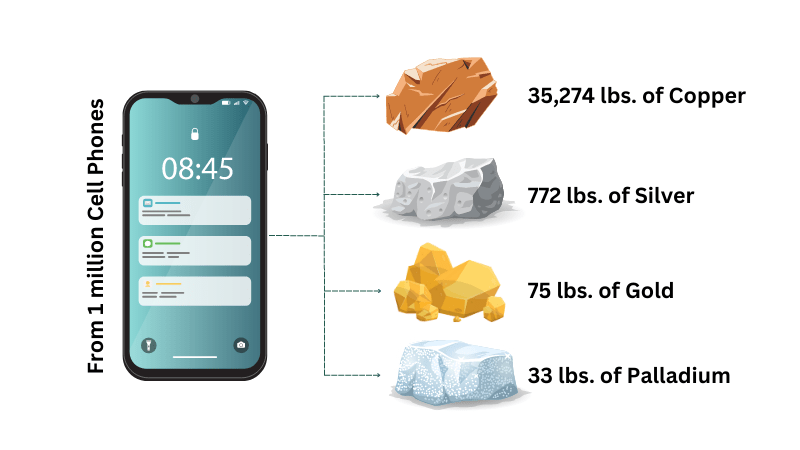

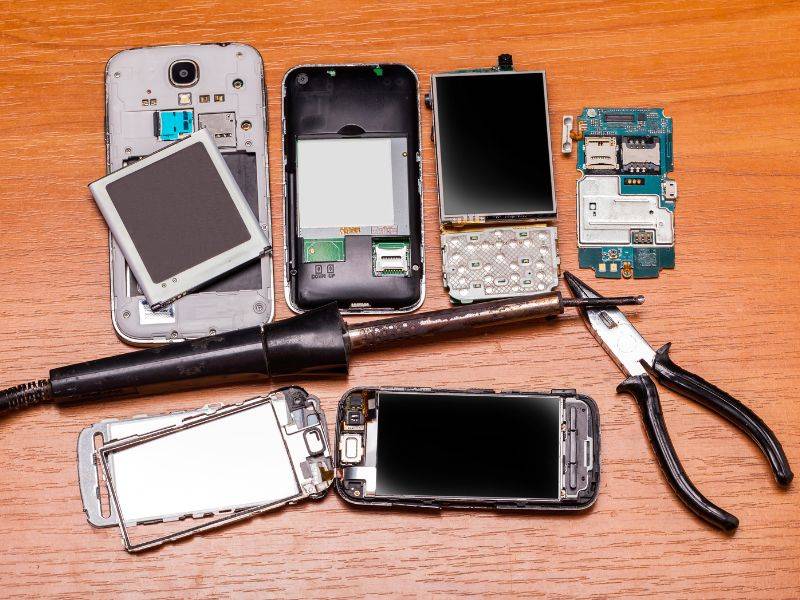
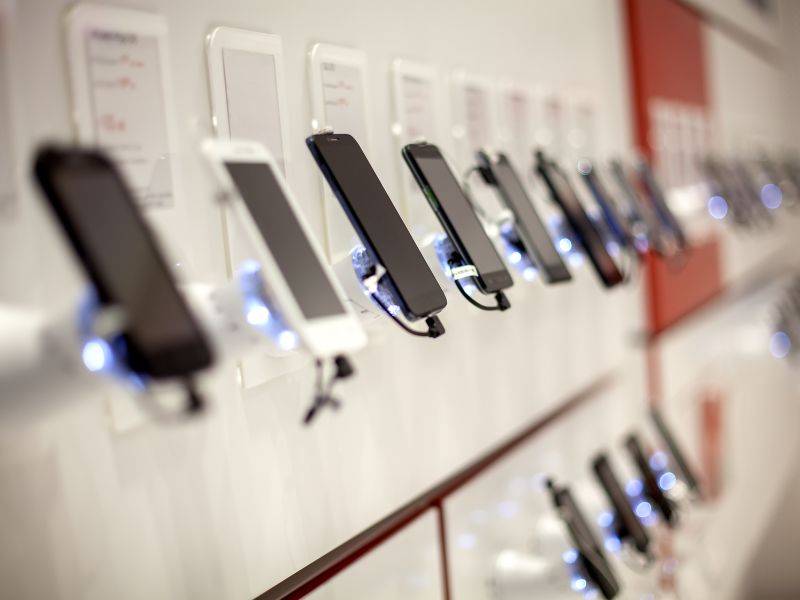









I am looking to dispose of some old cell phones please provide me with your address in Burlingame so I can drop them off
Thanks for sharing this post. It’s very informative and very interesting.
I have several cell phones that my family left for new models.